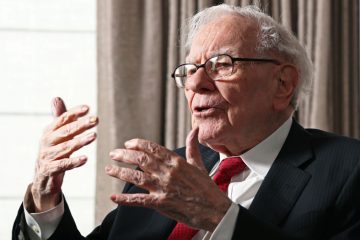Powell’s pivot sows confusion over when and how fast Fed will cut

Federal Reserve Chair Jerome Powell was asked at a recent gathering what he does for fun. He paused, then grinned.
“For me, a really big party—this is as fun as it gets—is a really good inflation report,” he said to laughter at Spelman College in Atlanta earlier this month.
Powell is finally getting what he wanted: A meaningful decline in inflation. But that is creating a familiar headache by making it harder for Fed officials, who want to keep their options open, to dissuade investors that rate cuts are imminent.
After their policy meeting last week, Fed officials released projections of at least three rate cuts next year. They have since been flummoxed that investors expect even faster and deeper cuts. The result: Confusion over when and how quickly the Fed might cut as the central bank tries to bring inflation down without a painful recession.
“If you convince yourself that you’ve got inflation headed to where you want it to be, I don’t have an objection to toggling rates down,” Richmond Fed President Tom Barkin said in an interview Tuesday. “But I’m still looking for conviction” that inflation will settle at the Fed’s 2% target and not above.
Officials last week didn’t rule out higher rates. But Powell ignited a market rally when he volunteered that some officials described their own rate-cut outlooks, even if it wasn’t a central focus.
He also said that this year’s decline in inflation meant officials could focus on not leaving rates too high too long. The Fed most recently raised its benchmark federal-funds rate in July to a range between 5.25% and 5.5%, a 22-year high.
Powell over the past year braced for drawn-out, hand-to-hand combat with inflation. Since July 2022, he began every postmeeting press conference noting how bringing inflation down would likely require weaker growth and hiring.
Powell omitted those lines last week, underscoring how the recent decline in inflation without any increase in unemployment took the Fed by surprise. “Inflation keeps coming down,” Powell said. “We kind of assume it will get harder from here, but so far, it hasn’t.”
Given the recent performance of inflation and the apparent shift in Powell’s outlook, “the Fed shouldn’t have been surprised by the market running with it,” said Julia Coronado, founder of economic-advisory firm MacroPolicy Perspectives.
After Powell’s Dec. 13 press conference, markets began to anticipate that the Fed might cut rates beginning in March by a quarter point and another five after that, double what Fed officials forecast. Before the meeting, markets anticipated no more than four cuts beginning around May.
A handful of Fed presidents subsequently hit the airwaves to pour cold water on speculation of a March cut. Markets’ reaction to Powell was confusing, said Chicago Fed President Austan Goolsbee. “We don’t debate specific policies, speculatively, about the future,” he said Monday on CNBC.
Tug of war with markets
The Fed and markets have engaged in a tug of war over the last 1½ years, with markets often anticipating a faster decline in inflation and more rate cuts than the Fed.
But the current situation feels different because inflation has been at or near the Fed’s target in five of the last six months. “The difference is in the data,” said Krishna Guha, vice chairman at Evercore ISI. “The disinflation is coming through earlier and faster than the Fed had prudently anticipated.”
Last week, Fed officials projected core inflation, which excludes volatile food and energy prices, would end the year at 3.2%, down a half percentage point from what they anticipated three months ago.
Data received during the Fed’s meeting last week suggest very mild inflation in November as measured by the central bank’s preferred inflation gauge, which the Commerce Department is scheduled to release Friday. Core inflation could reach or dip below 2% on a six-month annualized basis, according to private-sector forecasts, and the 12-month rate could drop to 3.1%, Powell said.
Powell said last week that some officials revised their inflation projections lower after new data was released on the morning of the last day of the Fed meeting. (Officials didn’t revise their rate projections).
While it is natural for the market and the Fed to disagree about the policy outlook, officials’ recent comments suggest that some are uncomfortable with the high probability markets have put on a cut in March.
The question is whether Fed officials think the market is “flat-out wrong” or think such an outcome is plausible but “don’t want to get boxed in around a meeting that is two meetings away, three months from now,” said Guha. Fed officials’ somewhat halfhearted pushback in recent days suggests the latter.
Eating their words
Other officials echoed Powell’s pivot by noting that inflation declines made them more eager to limit the risk of a downturn that may not be necessary to stamp out price pressures.
Several suggested that it would be appropriate to lower rates next year even if the economy doesn’t deteriorate to prevent inflation-adjusted or “real” rates from rising as inflation declines.
Interest rates could still be “quite restrictive even if we adjust policy” by lowering rates three times next year, San Francisco Fed President Mary Daly said in an interview Monday.
Fed officials and policy makers in the Biden administration are relieved that the economy has sustained strong growth with declining inflation.
Economists who said last year that bringing inflation down would require very high unemployment are “eating their words,” Treasury Secretary Janet Yellen told reporters earlier this month.
“A year ago, many economists were saying a recession was inevitable,” Yellen said in an interview last week. “But actually I’ve never felt there was a solid intellectual basis for making such a prediction.”
If markets have given Fed officials heartburn, it is partly because of their own published “dot plot,” where a dot represents each official’s projection of interest rates. The Powell Fed has relied on this guidance to transmit its interest-rate policy to financial markets. That can be trickier when there is more uncertainty.
Last week two officials anticipated no cuts next year and one projected the equivalent of six quarter-point cuts. “That’s a pretty wide range” to take a signal from, Barkin said.
The end of “higher for longer”
The dot plot has frustrated policy makers at times. That is partly because it is built from the bottom up rather than the top down. Officials submit projections the week before their meeting and don’t see their 18 colleagues’ submissions until the evening before the meeting.
Markets put great emphasis on the median, though that median isn’t the product of formal discussion. “Some people will talk about their dots and some people will not, but there is no…group conversation or strategizing that happens,” said Barkin.
Last week, officials’ median projection of three quarter-point cuts in 2024 was the friendlier of the two options that analysts had deemed most likely. Some figured that the central bankers would project only two cuts next year, in part to brace markets against expecting even more reductions.
Before the Fed meeting, “my bias was that they want to be really sure inflation will get back to 2%, not 3%, and not 3.5%,” said Jeffrey Cleveland, chief economist at Payden & Rygel, a Los Angeles-based asset manager. He wasn’t anticipating officials to project as many, or any, cuts “because we thought they were going to be willing to wait.”
The upshot was that Powell began to distance the Fed from holding interest rates “higher for longer,” a strategy officials floated earlier this year when inflation looked more stubborn and they were uncertain about whether to keep raising rates. Even if officials are backing away from that approach, “the bond market has gotten too far ahead of itself,” said Cleveland.








